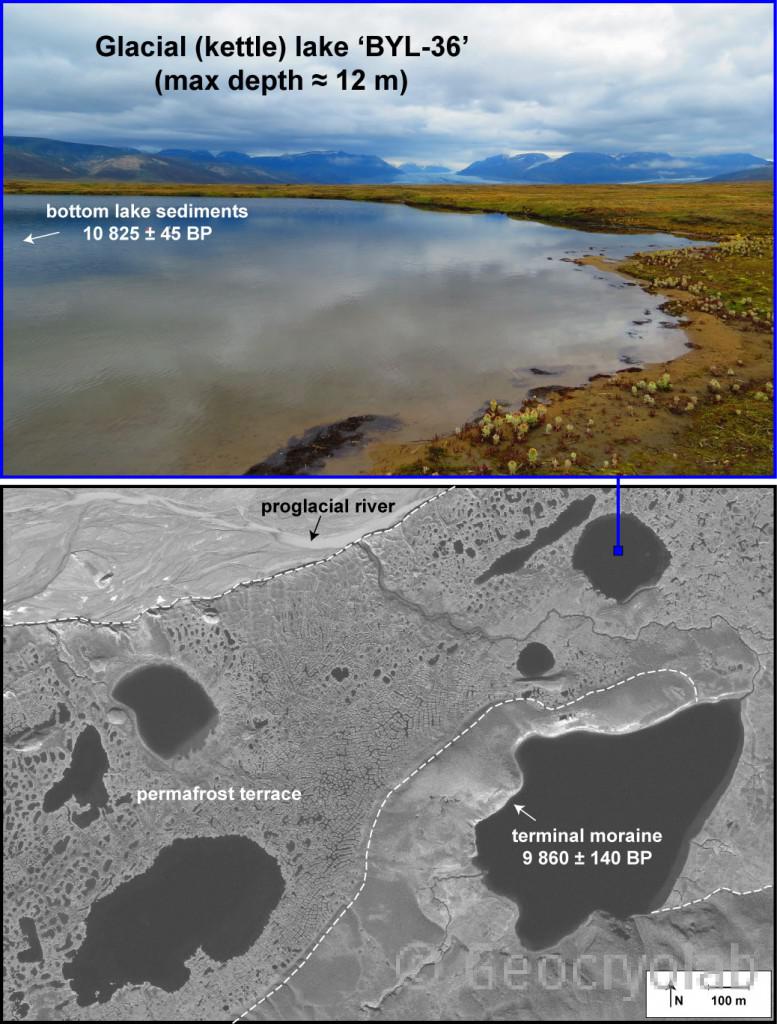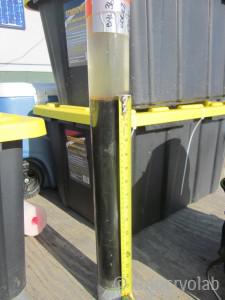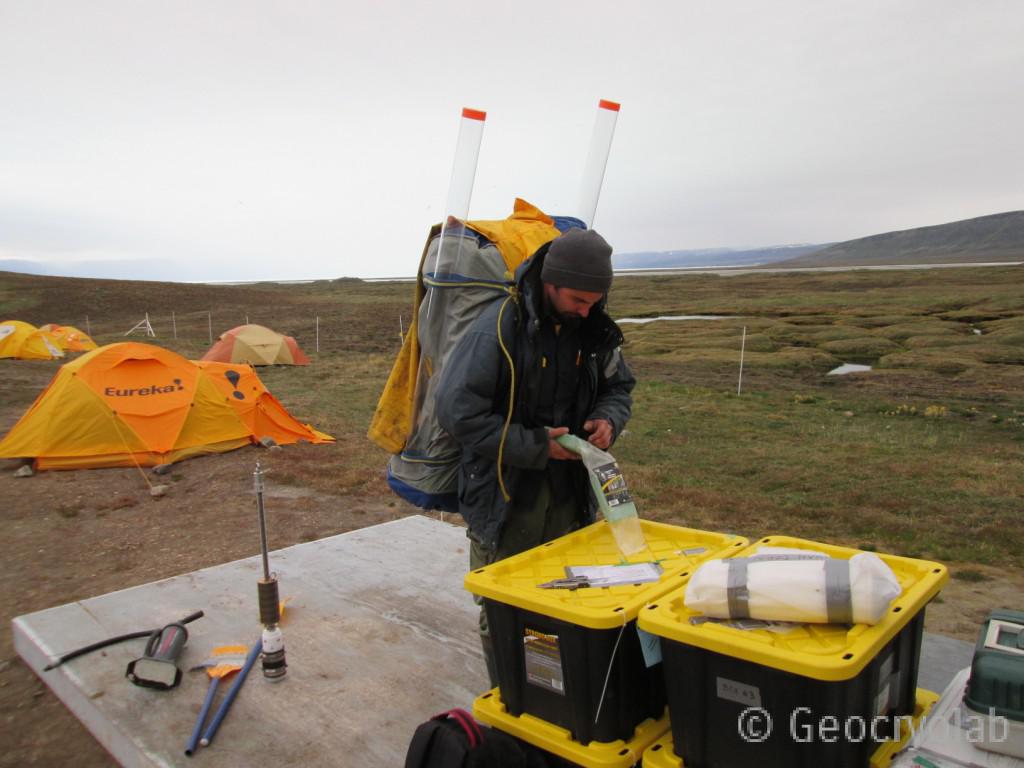Glacial lake sediments: nice paleoenvironmental archives.
May 25, 2015 in @en , focus-en by fbouchard

Figure 1: Location and context around kettle lake ‘BYL36’. The lake, containing sediments dated at 10.8 ka BP, is located just to the north-east (slightly upstream) of a terminal moraine dated at 9.8 ka BP (photos: V. Preskienis [upper] et GeoEye-1 [lower]).
During the summer of 2014, Geocryolab members used a novel method of bathymetric mapping in order to characterize the morphology of a glacial lake located in the valley ( see other post about the sonar-GPS system ). It is a kettle lake, formed by the melting of ground ice buried in soil after glacier retreat, and located near the position of the glacier front mentioned above ( Fig1 ). A > 30-cm long sediment core ( Fig2 ) was collected from the deepest part of the lake (~ 12 m), and 14 C dating at the base of these lacustrine sediments gave an age of 10 825 ± 45 BP, or 12 730 ± 50 cal BP once calibrated. The exact nature of these sediments still has to be confirmed, but this shows the great potential of studying sedimentary archives contained in lakes. Which makes our friend ‘Zodiac Sherpa’ ( Fig3 ) very optimistic.

Figure 2: Sediment core collected from the deepest part (~ 12 m) of kettle lake ‘BYL36’ (photo: F. Bouchard).

Figure 3 : Motivated young researcher who wisely checks, before jumping to the next coring site with a zodiac on his back, if he has all the equipment he needs. We can see the percussion corer just behind him (photo: V. Preskienis).
For further information:
Ce message est également disponible en : French

Glacial lake sediments: nice paleoenvironmental archives.
by
Geocryolab
is licensed under a
Creative Commons Attribution-NonCommercial 4.0 International License
.
